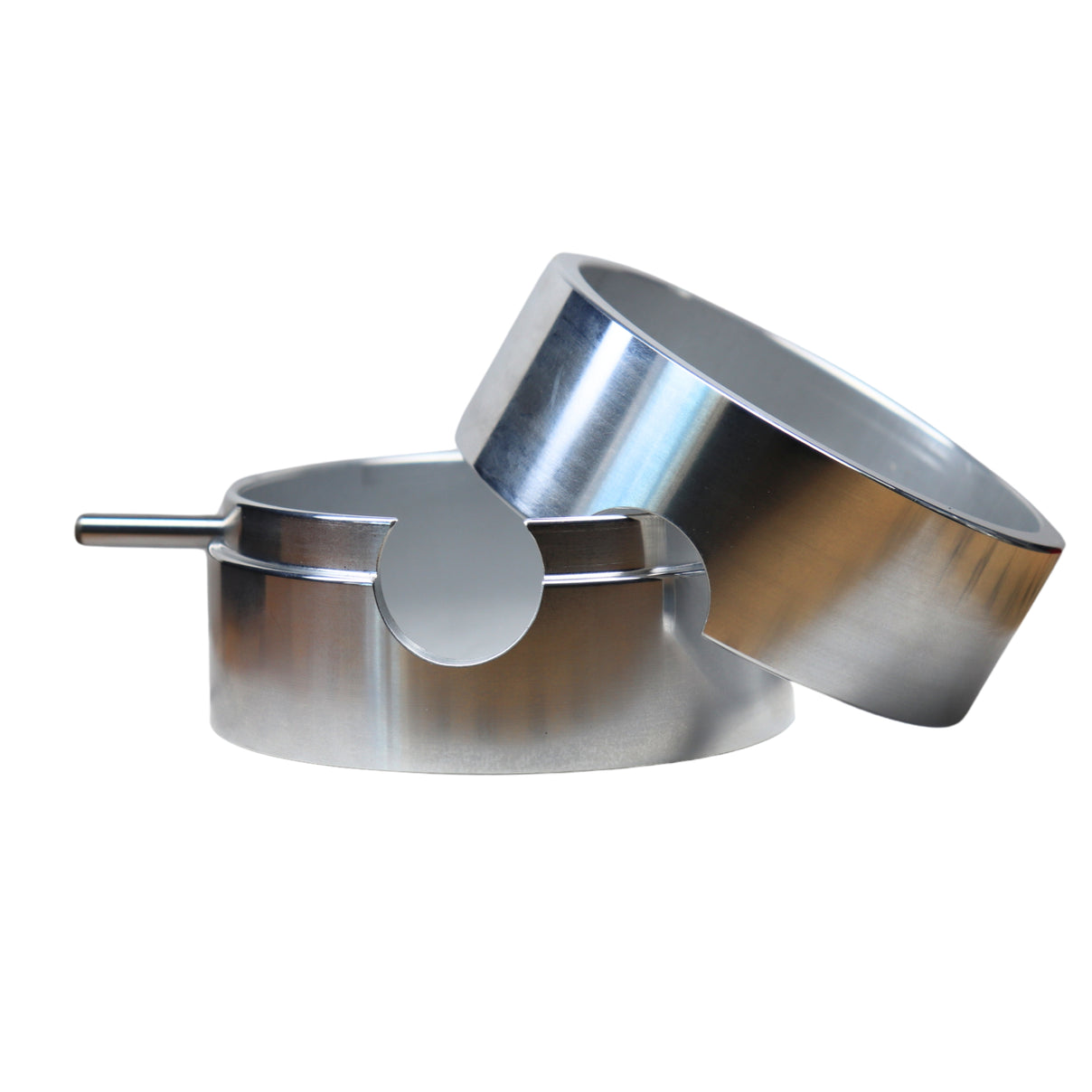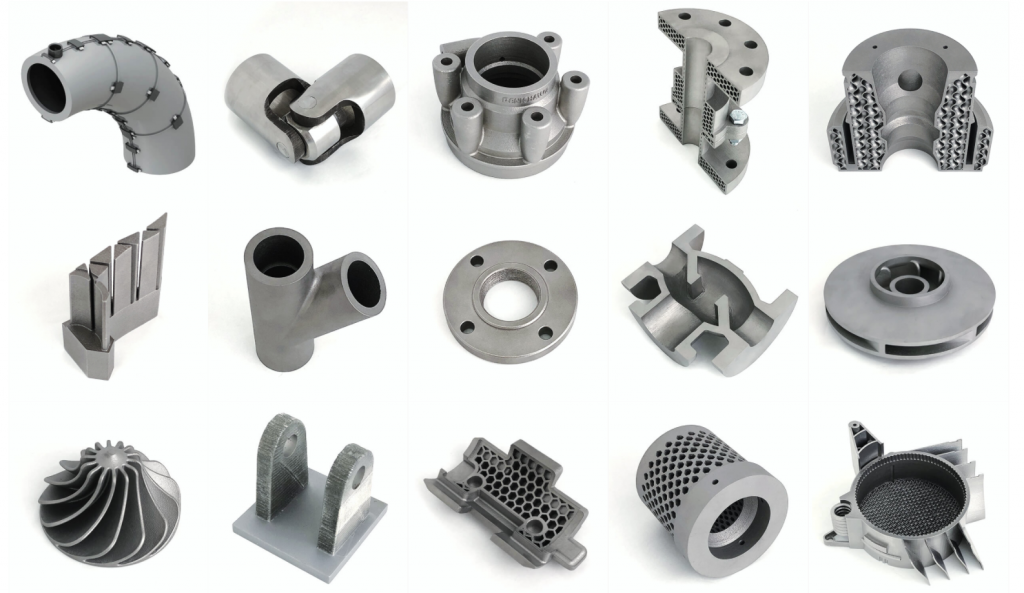Why Aluminum Metal Casting remains a preferred method for precision components
Wiki Article
Discovering the Essential Applications and Utilizes of Light Weight Aluminum Foundry in Modern Production
Light weight aluminum foundries play a vital role in modern-day production, serving varied industries with their special residential properties. From automobile parts that boost fuel effectiveness to aerospace structures that prioritize weight, light weight aluminum's versatility appears. Its applications reach building and consumer electronic devices, highlighting its sturdiness and energy efficiency. Nonetheless, the developments in light weight aluminum casting strategies and future trends necessitate a closer evaluation, as they might redefine its impact on production.The Role of Aluminum Foundries in Automotive Production
As the automotive industry progressively focuses on lightweight materials to improve gas efficiency and performance, light weight aluminum shops have ended up being important factors to making procedures. These foundries focus on generating parts that fulfill the stringent demands of contemporary lorries, such as engine blocks, transmission housings, and structural aspects. Aluminum's desirable residential properties-- such as high strength-to-weight ratio, corrosion resistance, and outstanding thermal conductivity-- make it a suitable selection for auto applications.Aluminum shops make use of sophisticated casting techniques, including die casting and sand spreading, to develop complex and resilient components. This ability enables producers to optimize layouts for performance while minimizing weight. Making use of light weight aluminum likewise supports sustainability objectives, as it is extremely recyclable and reduces power usage in vehicles. By helping with the integration of light weight aluminum into auto layout, factories play a critical role fit the future of the automotive industry, promoting performance and development throughout the board.
Aerospace Applications: Lightweight Solutions for Flight
Aluminum factories play a considerable duty in the aerospace market, where the need for light-weight materials is paramount for improving fuel effectiveness and efficiency in aircraft. The one-of-a-kind buildings of aluminum, including its high strength-to-weight proportion and corrosion resistance, make it a suitable choice for different aerospace parts. These components consist of architectural parts, engine cases, and touchdown gear, which add to total aircraft performance.Making use of light weight aluminum alloys, particularly those established via advanced casting methods, permits for the production of elaborate styles and intricate forms while minimizing weight. Furthermore, light weight aluminum's recyclability lines up with the aerospace market's sustainability objectives, reducing environmental impact. With constant innovations in aluminum foundry innovations, suppliers can maximize manufacturing processes, leading to enhanced effectiveness and lowered prices. As the aerospace field increasingly prioritizes developments that improve efficiency, aluminum factories will stay important to creating light-weight remedies for modern-day trip.
Structure and Building And Construction: Enhancing Architectural Integrity
In the structure and building market, a considerable emphasis is put on enhancing structural honesty via using aluminum. Known for its high strength-to-weight ratio, aluminum gives longevity without endangering on weight, which is important in contemporary building styles. Its resistance to corrosion further assures long life, making it an excellent product for various architectural elements, consisting of beam of lights, frames, and cladding.Light weight aluminum likewise facilitates cutting-edge style possibilities, enabling architects and designers to develop visually pleasing frameworks while preserving safety and security requirements. The product's flexibility allows its application in both commercial and property tasks, from high-rise buildings to bridges. In addition, improvements in light weight aluminum foundry methods have actually improved the precision of light weight aluminum components, ensuring they satisfy rigorous building regulations. Generally, the assimilation of aluminum in building not just boosts architectural integrity however likewise adds to lasting building methods, provided its recyclability and energy-efficient production approaches.
Customer Electronic Devices: The Rise of Aluminum in Innovation
In the domain name of customer electronic devices, light weight aluminum has actually obtained prominence due to its lightweight design advantages and exceptional thermal conductivity. This shift not only improves product mobility however likewise enhances gadget performance by successfully dissipating warmth. As modern technology proceeds to advance, the role of light weight aluminum in developing reliable and streamlined gadgets is progressively considerable.Lightweight Design Advantages
As customer electronic devices progress, the demand for lightweight yet durable products has actually surged, making aluminum a significantly preferred selection among producers. Its low thickness permits the development of sleek devices that are very easy to utilize and carry, significantly enhancing portability. The strength-to-weight ratio of aluminum warranties that products can stand up to daily damage without endangering performance. In addition, the malleability of light weight aluminum allows manufacturers to design complex shapes and kinds, further adding to ingenious visual appeals and performance. This lightweight characteristic likewise plays a vital role in power efficiency, as lighter gadgets call for less power to operate. Therefore, light weight aluminum not only fulfills the developing visual needs however additionally aligns with the contemporary emphasis on sustainability in consumer electronic devices.Thermal Conductivity Perks
Thermal conductivity is a crucial consider the performance of consumer electronic devices, and light weight aluminum excels in this domain. Its high thermal conductivity permits efficient heat dissipation, which is essential for maintaining ideal operating temperature levels in tools such as smartphones, laptops, and video gaming consoles. By promoting rapid heat transfer away from sensitive elements, light weight aluminum aids protect against overheating, thus improving efficiency and lengthening tool long life. The lightweight nature of aluminum complements its thermal residential or commercial properties, making it an optimal option for portable technology. As manufacturers Recommended Reading increasingly focus on efficiency and power performance, light weight aluminum's duty in thermal monitoring ends up being much more significant, leading to its growing fostering in modern-day digital styles. This trend emphasizes light weight aluminum's value in consumer electronic devices technology.Marine Market: Corrosion Resistance in Harsh Settings
Rust resistance is a vital consider the marine industry, where equipment and frameworks are consistently exposed to rough deep sea atmospheres. Light weight aluminum, particularly in its alloy forms, supplies considerable advantages in this respect. Its natural oxide layer gives a protective obstacle that protects against rust, making it optimal for vessels, docks, and other marine applications.Marine-grade light weight aluminum alloys, such as 5083 and 6061, are especially developed to hold up against the destructive impacts of deep sea and atmospheric problems. These alloys not only stand up to rust however likewise keep architectural integrity and toughness in time. Applications range from hulls and superstructures of ships to components in overseas platforms.
The light-weight nature of aluminum more improves its viability, enabling improved fuel effectiveness and convenience of handling - aluminum casting company. As the marine market proceeds to concentrate on sturdiness and efficiency, light weight aluminum remains a necessary product choice for resisting rust popular aquatic setups
Innovations in Aluminum Casting Techniques
While standard light weight aluminum spreading methods have served the industry well, recent developments are transforming the landscape of light weight aluminum production. Methods such as 3D printing of cores and mold and mildews are getting grip, permitting for quick prototyping and lowered preparations. This innovation makes it possible for manufacturers to develop intricate geometries that were formerly hard to attain with standard spreading techniques. Furthermore, developments in die-casting technology, consisting of the usage of high-pressure die-casting (HPDC), have actually enhanced the precision and surface coating of actors aluminum components, resulting in enhanced efficiency in numerous applications.The fostering of investment casting has actually allowed for better style freedom and lowered material waste. Innovations in alloy make-ups are likewise substantial, as they improve mechanical buildings and rust resistance. Generally, these growths not only simplify production procedures but additionally add to even more sustainable methods within the light weight aluminum factory industry, making it adaptable to the advancing demands of contemporary manufacturing
Future Patterns in Aluminum Foundry Production
The future of aluminum foundry production is poised for significant improvement through automation, enhancing efficiency and accuracy in manufacturing processes. Lasting methods are increasingly ending up being a priority, as shops look for to minimize their environmental impact while fulfilling growing regulatory demands. Additionally, innovations in alloy growth will allow the production of more powerful, lighter materials customized for varied applications, driving advancement in additional resources the market.
Automation in Foundry Processes

Lasting Production Practices
An expanding emphasis on sustainable manufacturing practices is reshaping the future of aluminum factory production. Market leaders are progressively taking on energy-efficient innovations and recycling efforts to lessen waste and reduce carbon impacts. Using recycled aluminum substantially reduces power consumption compared to primary aluminum production, making it a preferred choice for ecologically conscious producers. Furthermore, ingenious spreading strategies are being established to improve product performance and decrease emissions. Business are additionally spending in eco-friendly energy sources, such as solar and wind, to power their operations sustainably. aluminum foundry. By integrating these methods, the aluminum shop market not only satisfies governing requirements however likewise replies to consumer need for greener items, ultimately leading the way for a more lasting manufacturing landscapeAdvanced Alloy Growth
Improvements in light weight aluminum alloy growth are established to play a considerable role in the future of factory production, especially as sustainability and efficiency demands intensify. The industry is significantly concentrating on producing high-strength, lightweight alloys that can withstand severe conditions while decreasing environmental impact. Scientists are checking out ingenious structures, such as aluminum-lithium and aluminum-scandium alloys, which guarantee enhanced mechanical homes and lowered weight. Additionally, the combination of sophisticated production methods, including additive production and precision spreading, permits for more complex geometries and decreased material waste. As governing pressures and customer choices change towards greener alternatives, the growth of energy-efficient and recyclable alloys will be crucial. The future landscape of aluminum foundry production rests on these improvements in alloy innovation.
Often Asked Inquiries
What Are the Ecological Influences of Light Weight Aluminum Shop Workflow?
Light weight aluminum factory operations can cause significant ecological effects, consisting of greenhouse gas discharges, power intake, and waste generation. Additionally, incorrect administration of pollutants may cause soil and water contamination, influencing neighborhood communities and communities.Just How Does Light Weight Aluminum Recycling Affect Factory Processes?
Aluminum reusing boosts shop processes by supplying a cost-effective basic material, decreasing power intake and discharges. This lasting method enhances performance, reduces waste, and supports the round economic situation, benefiting both producers and the environment.What Safety Procedures Are Carried Out in Light Weight Aluminum Foundries?
Aluminum shops carry out numerous safety actions, including individual safety tools, proper air flow systems, normal security training, fire prevention procedures, and devices maintenance procedures to reduce dangers and ensure a secure functioning atmosphere for all workers.How Do Foundries Ensure Quality Assurance in Light Weight Aluminum Spreading?
Foundries ensure top quality control in light weight aluminum spreading via rigorous material assessments, exact temperature level monitoring, standardized treatments, and routine screening of actors items. These procedures aid preserve consistency, lower flaws, and meet market specs efficiently.What Are the Price Consider Aluminum Factory Production?
Price consider aluminum factory production consist of basic material prices, energy usage, labor expenses, equipment upkeep, and overhead costs. In addition, manufacturing quantity and complexity of layouts considerably influence overall manufacturing expenses and profitability.
As the auto sector increasingly prioritizes lightweight materials to boost fuel efficiency and performance, light weight aluminum foundries have come to be vital factors to manufacturing procedures. Aluminum foundries play a significant duty in the aerospace industry, where the demand for lightweight products is critical for boosting gas efficiency and efficiency in aircraft. In addition, developments in light weight aluminum foundry methods have improved the precision of aluminum components, guaranteeing they fulfill stringent building codes. While traditional aluminum casting techniques have served the industry well, current developments are transforming the landscape of light weight aluminum production. The usage of recycled aluminum considerably reduces power usage contrasted to key aluminum production, making it a preferred selection for eco mindful producers.
Report this wiki page